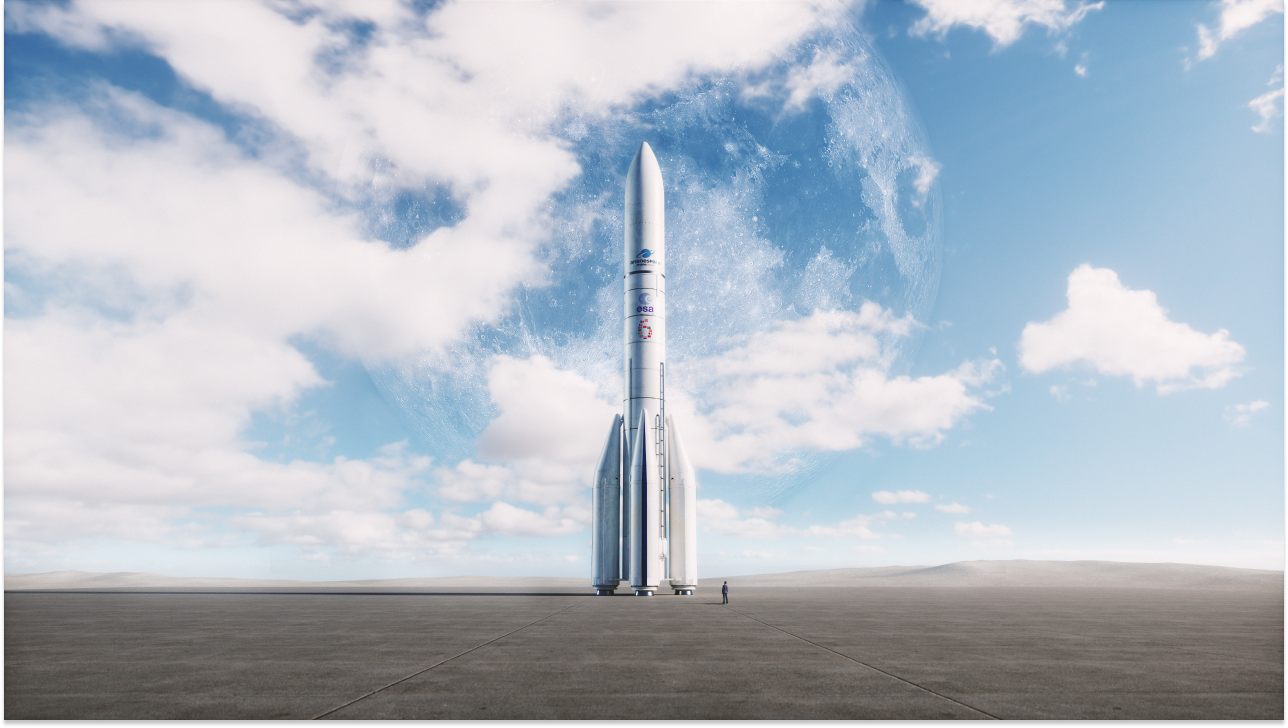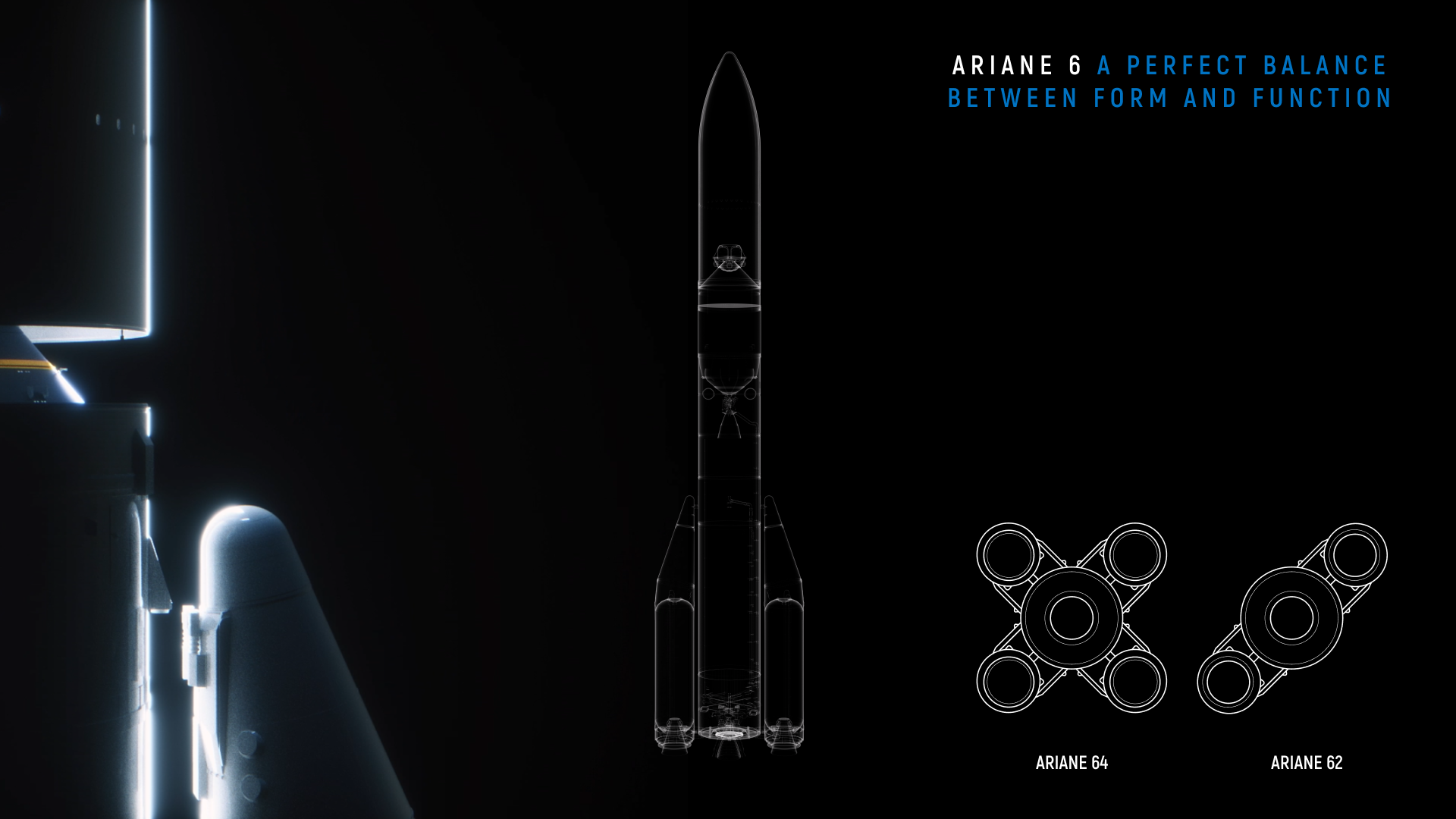Ariane 6, designed to go far – in high style
30.11.2023

A 100% modular design
Ariane 6 is designed to be modular, in order to offer optimum flexibility for placing different types of payloads into a wide range of orbits. The launcher comes in two easily recognisable versions: its central core, made up of two cryogenic stages powered by the Vulcan 2.1 engine down at the bottom and the re-ignitable Vinci engine on the upper stage, can be fitted with either two or four boosters (equipped solid rockets) as the mission calls for. The four-booster version, Ariane 64, can place up to 12 tons in geostationary transfer orbit (GTO) and up to 20 tons in low Earth orbit (LEO). Equipped with two boosters, the Ariane 62 version can for its part carry up to 4.5 tons to GTO and 7 tons to sun-synchronous orbit (SSO). This adaptable design means that the launcher’s power can be tailored to the needs of each mission.

Overcoming resistance
Even if it is designed to be ejected as rapidly as possible, because of its weight, the fairing plays an essential role during each launch. Its purpose is to protect the satellites at lift-off and when passing through the dense layers of the atmosphere. Its ogival shape has been precisely designed to reduce air resistance (drag) throughout the launcher’s climb phase and thus improve its aerodynamic efficiency. It comes in a long 20-meter and a short 14-meter version, so that, depending on its passengers and the particular mission, Ariane 6 is more or less elongated.
The art of efficiency
Aerodynamics is one of the fundamental characteristics which dictate the Ariane 6 design. Its slender shape enables it to penetrate the air with maximum efficiency, thereby optimizing its fuel consumption and overall performance. Its fuselage is both lightweight and strong, thanks to the use of innovative composite materials such as carbon fiber or aluminium/lithium, keeping down the launcher’s total weight while maximizing resistance.
Color with a purpose
The white color of the Ariane 6 fuselage is not simply elegant, it also has a highly functional and technical purpose. In thermodynamics, white has an excellent ability to reflect sunlight, which helps control the launcher’s internal temperature and protect its most sensitive components. The color white also provides an ideal background for visual monitoring and detection of any anomalies on the launcher’s external surface during the launch operations. These are all excellent reasons for choosing white as the traditional color for the visual identity of the Ariane launchers.
A symbol of excellence
From the number of stages to the color of the fuselage of Ariane 6, each part of the rocket is studied in the minutest detail to achieve a perfect balance between form and function. Each line, each material, each color contributes to the optimum performance of this feat of engineering which brings together 13 European countries. Far more than just a launcher, Ariane 6 is a symbol of union and excellence. Maybe that is its most beautiful aspect.
